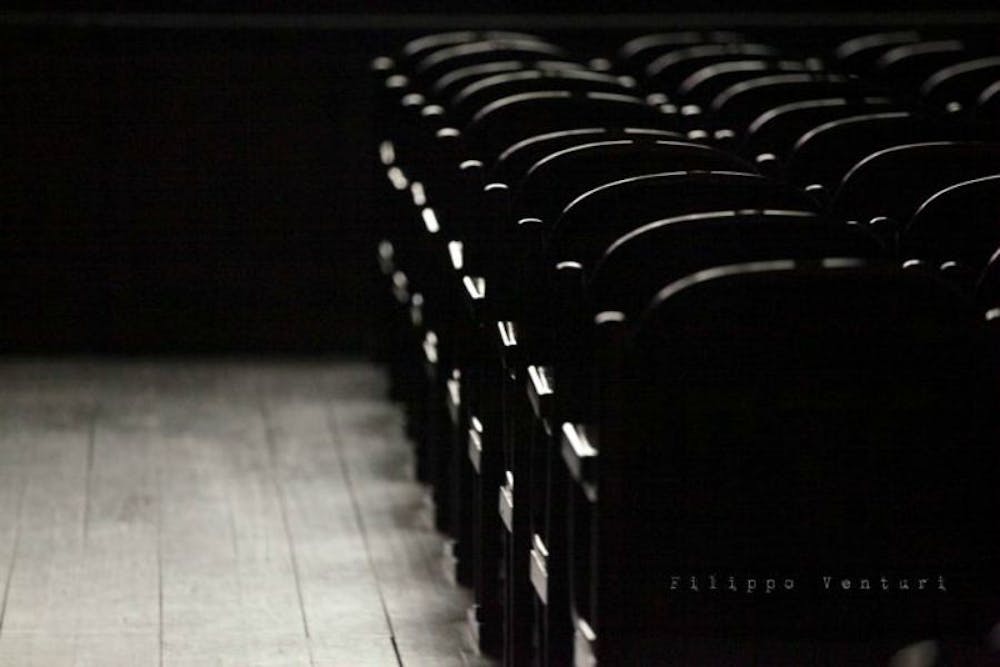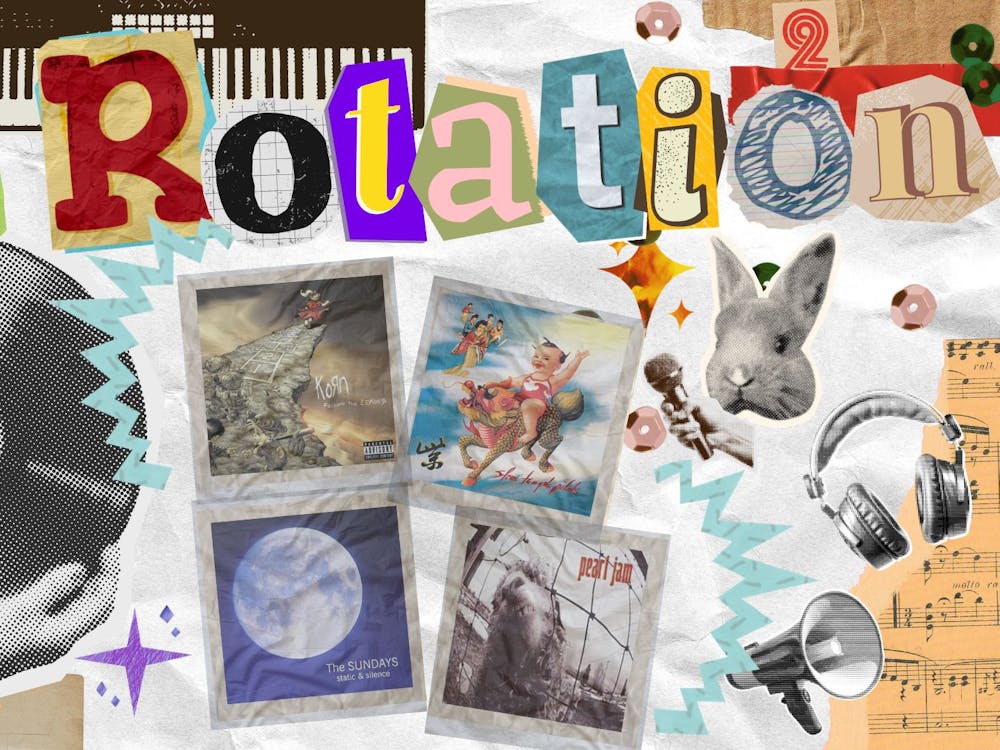By Megan Bowers, Senior Staff Writer
Although puppets are most commonly associated with humor, their usage in the Theatre Department's production of "The Long Christmas Ride Home" is far from comical.
The show portrays a family of five as they celebrate Christmas, both in their church and at their grandparents' house.
However, it is not a merry Christmas as there are many tensions in the family that begin to erupt.
"The husband is an alcoholic, is abusive and is cheating on my character, the wife," said first-year Abigail Murray, who plays the Narrator and Woman.
Most of the show deals with the problems between the parents and their relationship with their children.
There is an added pressure for the actors as they both act in the show and narrate it.
"I switch back and forth between narrating the people in the time and place and am also an outsider viewing the story," said Murray. "It's difficult to go back and forth from in it and out of it."
There is also an unexpected musical element in the play.
A man sits in the middle of the audience, adding sound effects to enhance the story. He does this throughout the show, adding noise for the car, knocking on the door and just as a general introduction to many scenes.
The seating for the audience is arranged in a distinctive way, unlike the typical theater format. The front row of the audience is seated on pillows on the ground, and the row behind them is seated on wooden benches.
This, combined with the lowly lit screens in the back of the room, gives the space the feeling of a close comforting area and gives off a slight Japanese vibe.
Enjoy what you're reading?
Signup for our newsletter
This ties in with a general theme of looking at how westerners perceive Japanese culture. It is taken further by what the characters say and through the use of Bunraku puppets.
The department was lucky enough to have Aretta Baumgartner, education director at the Center for Puppetry Arts in Atlanta, come out to teach the students how to work with the puppets.
"She was one of the few people in the nation, or maybe even in the world, who could come help us understand the kind of puppets we are using -- how to manipulate them and how to understand their world and needs," said director Lewis Magruder.
Even the actors who weren't directly using the puppets still had the opportunity to learn from the workshops she held.
"She is the liveliest, most energetic and most wonderful person I have ever met," said Murray. "I think getting to work with a professional like her was a great growing experience for me."
The three actors playing the children are the ones who use the main puppets. The puppets portray them as children, and then the puppeteers later play the adult version of themselves.
"They manage it beautifully," said Magruder. "Even when the puppets are literally on the floor dancing, they are able to pull it off."
The puppeteers are able to make the emotion come alive through their own facial expressions and the way they move the puppets.
"It was really interesting because you could visibly see two of the puppets recoiling in disgust when the third one was about to be carsick," said first-year Marco Colant, who was in the audience.
The show also incorporates the use of shadow puppets to represent the people in the kids' grownup lives. Ensemble actors dressed in black help manipulate the scenes by taking the puppets and bringing props to the actors.
"There's a theatrical technique and dynamic going on that makes it really interesting," said Magruder.
The play has an overall dark outlook that shifts the characters from their childhood to their adulthood after the children witness an act of violence in their family.
The rest of the story shows how each of the siblings' lives were affected by what happened that day.
"The play works with those elements of magical realism but it still deals with topics like suicide, AIDS and cheating, which are all topics that are still relevant today," said Murray.
Each of the actors playing the siblings does a wonderful job of showing the pain and hardship their character was going through as adults before shifting back into playing a younger, more innocent version of the character.
All the elements of the show make it incredibly unique. There is so much going on aesthetically, it can be hard to process at first. But once it has, the show takes on a form unlike anything else, impacting the audience in ways they didn't think it would.
The show runs at 7:30 p.m. on April 28-30 and at 2 p.m. on April 30 and May 1 in Studio 88. The cost of admission is $8.




